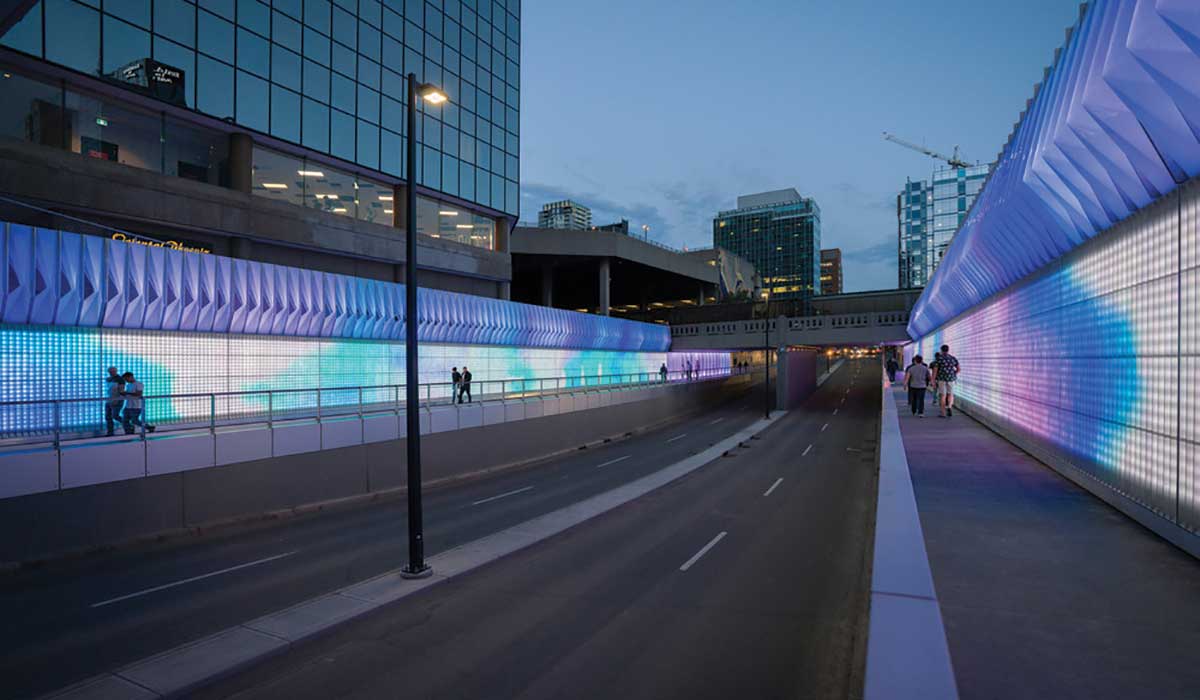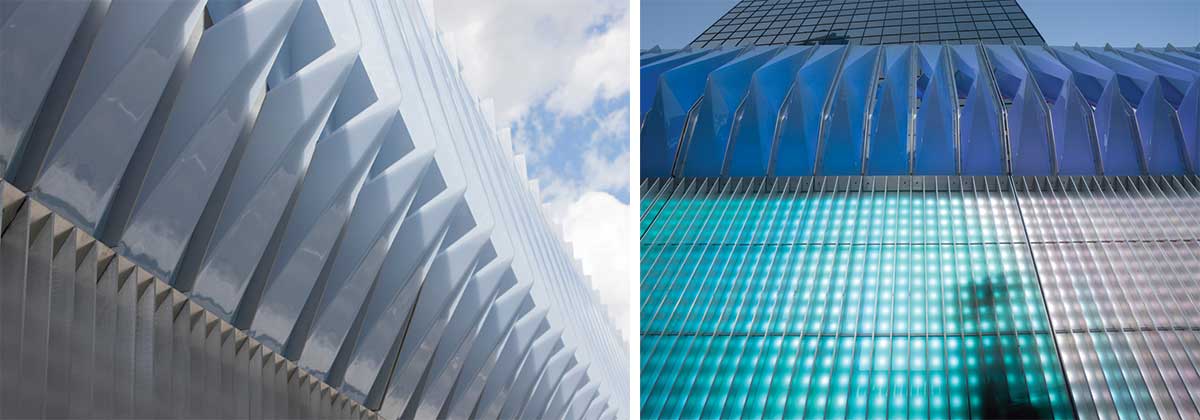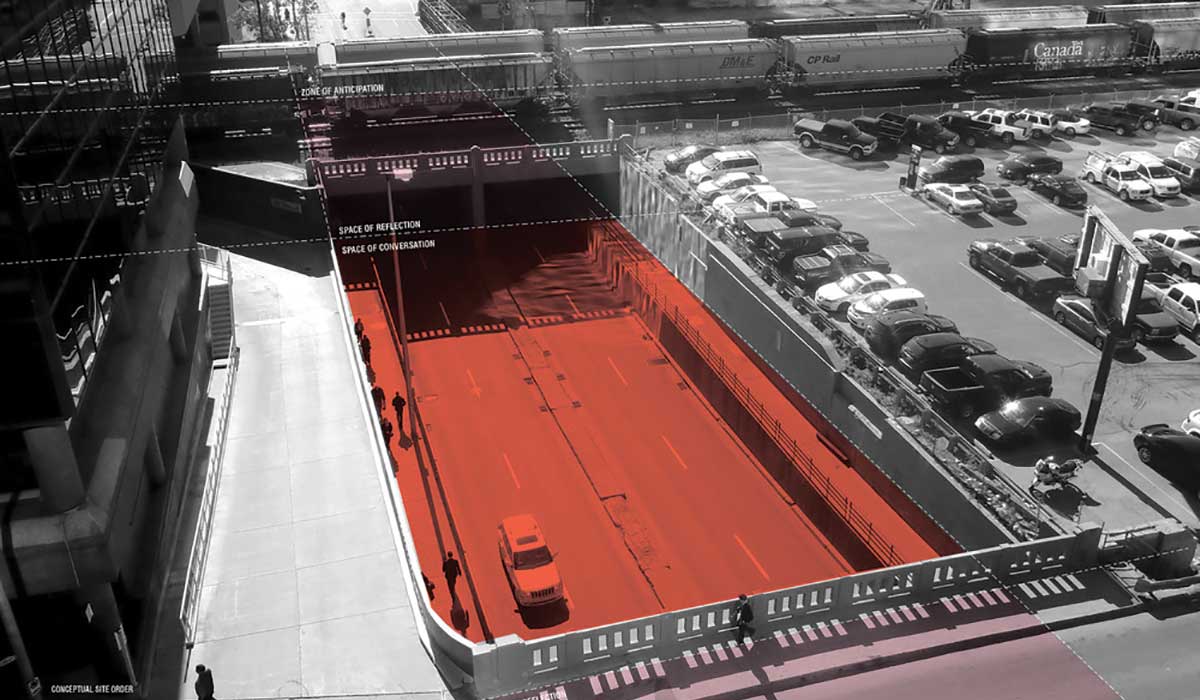Fact File
Client: The City of Calgary
Budget: $6.7 million
Architecture: MBAC
Photo credit: Bruce Edward Statham/yellowcamera

The underpass, a familiar feature of Western Canadian cities, is a modest yet essential type of urban infrastructure. Although these underpasses were initially conceived as a mechanism for safe movement, they have come to embody some of Calgary’s most uncomfortable public spaces. Limited accessibility, poor lighting conditions, particularly at night and during the winter, pedestrian safety, and overall deterioration called for a radical solution, one that would provide a safe, comfortable, and engaging public space.

MBAC’s proposal for the 4th Street SW Underpass was founded on the notion of reclaiming a ‘space of removal’ and turning it into a ‘space for conversation.’ As pedestrians walk down towards the first segment of the underpass, they go through a ‘Space of Anticipation,’ followed by a ‘Space of Reflection.’ The middle section, open to the sky above, becomes the ‘Space of Conversation.’
Animated light and color effects create an evocative and timeless experience. The effects are produced by thousands of LED lights, located along the 87-meter walls on either side of the underpass. A sophisticated custom detection technology software, which generates an abstract representation of passersby’s movements, was developed by INVIVIA. Cameras sense pedestrians, as they enter the underpass, and project their shadows diagonally across on the facing wall.

Materials were selected for their ability to reflect, diffuse, and catch light. The envelope designed to house the interactive lighting installation includes a reflective aluminum ‘exoskeleton,’ on the public side, an 8mm layer of tempered, laminated safety glass with a translucent interlayer for light diffusion, a thermoformed, translucent polycarbonate panel, and a supporting subframe of galvanized steel, hung from the existing concrete infrastructure.
Particular attention was paid to ensure that this public art installation would be performative not only at night but also during daytime. The lighting system’s components are located within the new envelope, behind the protective surfaces. The wall itself is designed as a series of panels so that each individual LED fixture can be accessed, serviced, or replaced.















